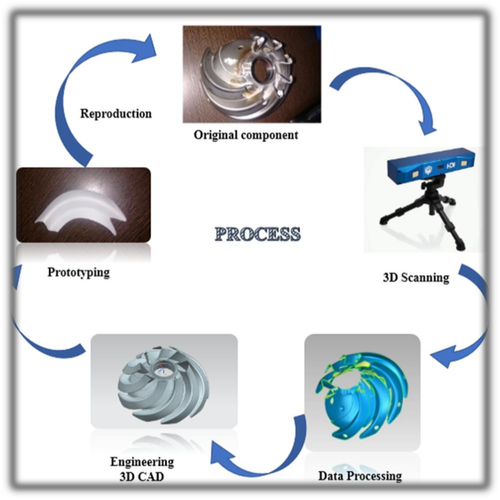What is Reverse Engineering and its Applications
Reverse Engineering, Back Engineering or Re Engineering refers to the process of understanding how an existing product is designed and developed and extracting the design details. Reverse Engineering involves understanding how each part functions, often including breaking down the product into its individual parts for further analysis and hence this process of tear down has become an integral part with reverse engineering. It has been termed as ’reverse’ because process is not going from design to production, rather arriving at the design from an already produced product. Reverse engineering is not only used in the development of new products but also to solve issues with existing products, and not limited to products but aircrafts, ships, heavy machinery, factory equipment and construction. With the evolution of technologies like 3D scanning and digital tools to reconstruct CAD models of physical systems, reverse engineering is helping engineers in many ways. Reverse Engineering encompasses all aspects of the product engineering but in this article we do not cover reverse engineering from software development and electronic hardware development perspective.

.Reverse Engineering Process
Applications of Reverse Engineering
1. Part Replacement
Parts wearing out and failing is a common problem in any industry and would require replacement. And if the machine is old it is difficult to contact the manufacturer for spare parts. Or it could also be a situation where the manufacturer no longer is in business. But with the help of a 3D scanner, the defective component can be scanned and the data can be used to build the CAD design model. Once the CAD design is ready the part can be produced using rapid prototyping for replacement.
2. Part Service and Repair
Machines need servicing and repairing which involve dismantling the sub-systems and looking for the defective part and then calling for replacement procedures. If the design documents are not available, reverse engineering can help to prepare the maintenance sequences for training and aiding the personnel on what processes and sequences to be followed in identifying the problem and replacing the part. For example if the clutch disc has to be replaced in a truck, all the sequence of how the drive shaft, transmission cover and couplings have to be removed to access the clutch can be documented with the help of reverse engineering.
3. Failure Analysis
Examining a product by each component that makes it function can help to identify cause of failure and any potential issues that may have risen due to design flaws. Once they are identified, they can be eliminated with design modifications. For example, if an LCD display needs replacement frequently, failure analysis can help identify if any loose PCB wire connectors are causing the display glitches or if the heat sink for battery heat did not dissipate properly leading to electronic failure etc can be assessed. In another example, if any particular component has shown failure at the joints or bolt holes, reverse engineering can help to create the CAD data of the part and only the joining geometries can be modified or strengthened with ribs without having to design the whole part from scratch.
4. Parts Improvement
Companies perform reverse engineering on their competitor products to understand and improve. Not just observing the competitor products alone, but often improvement on previous versions is the key to retain the interest in customers. And the results from failure analysis will help to bring out new ideas for part improvement.
5. Diagnosis and Problem Solving
Factors follow several processes to produce their end products. Reverse engineering can help understand the flow of each process and thus to establish a maintenance protocol. It can also enable for creating and documenting knowledge so that if anything goes wrong in the machinery and operations it becomes easy to deal with fixing the problem.